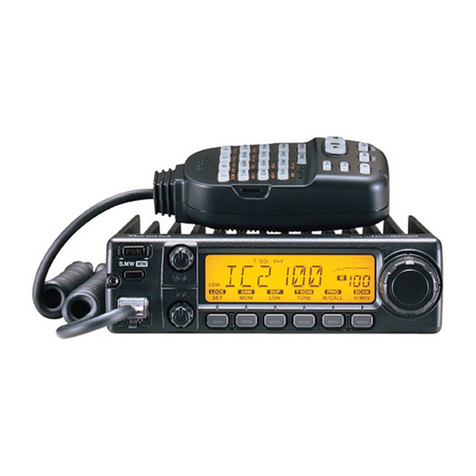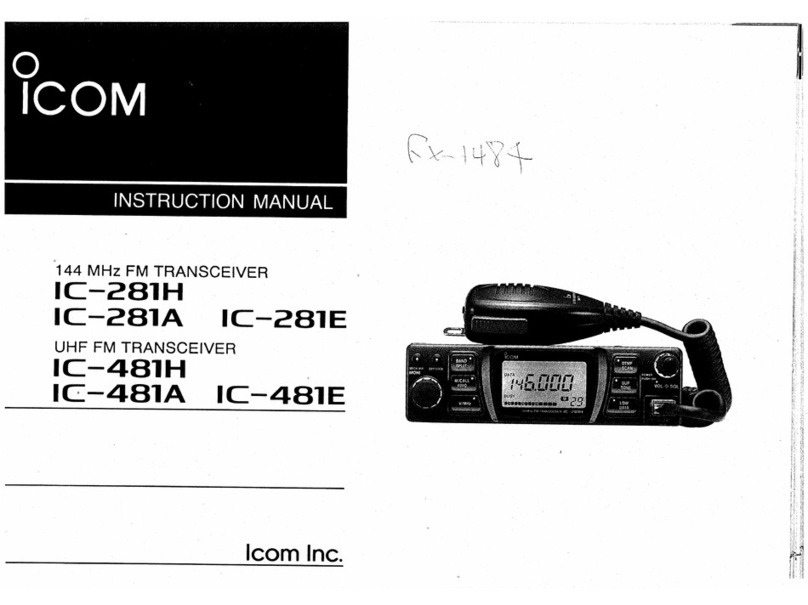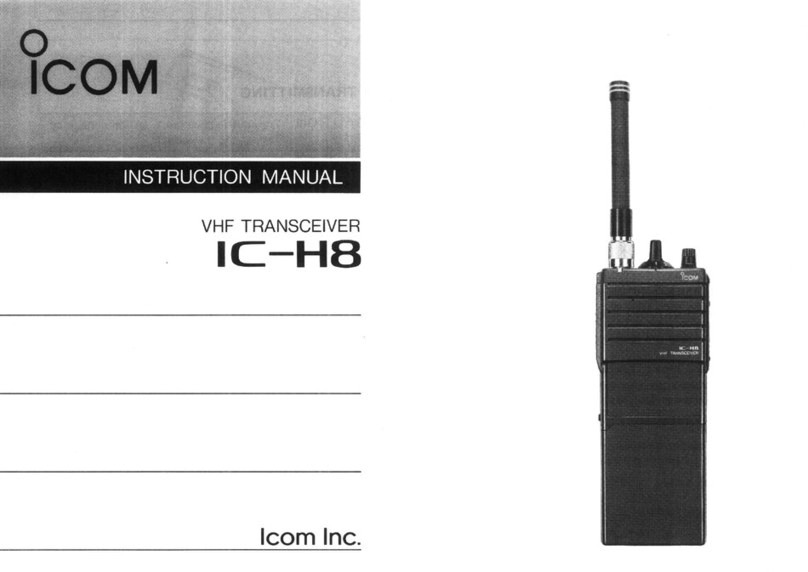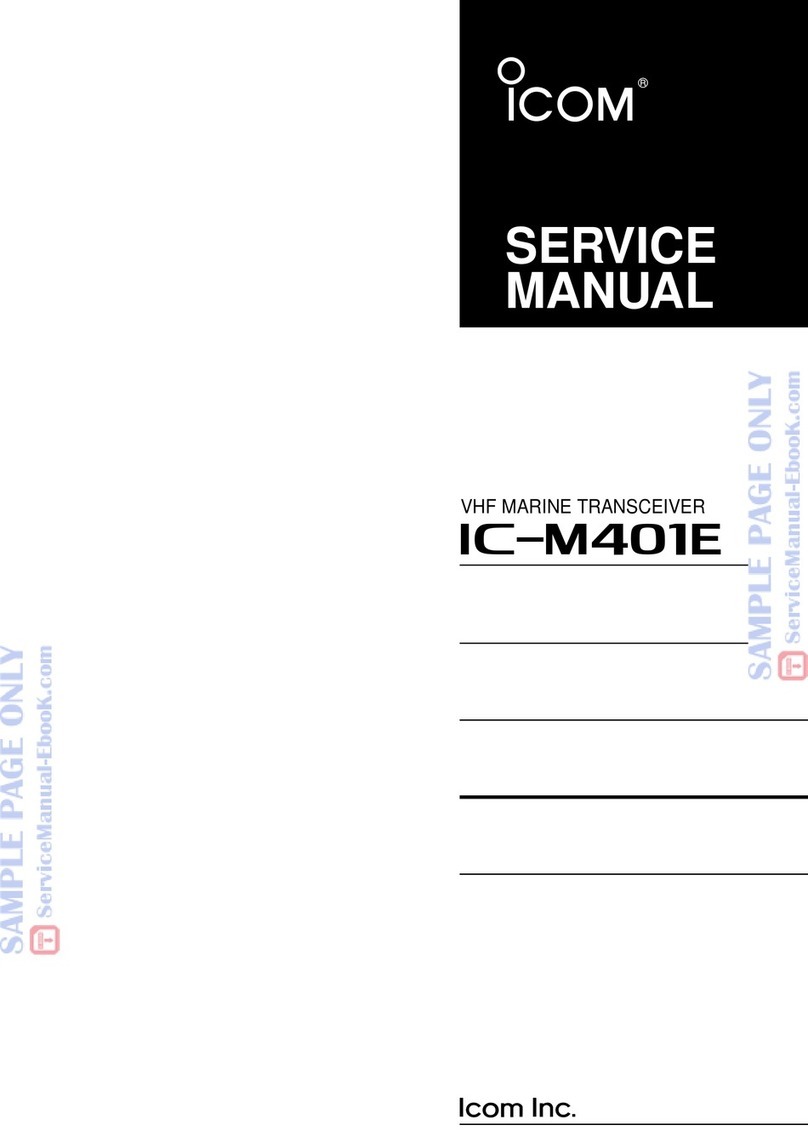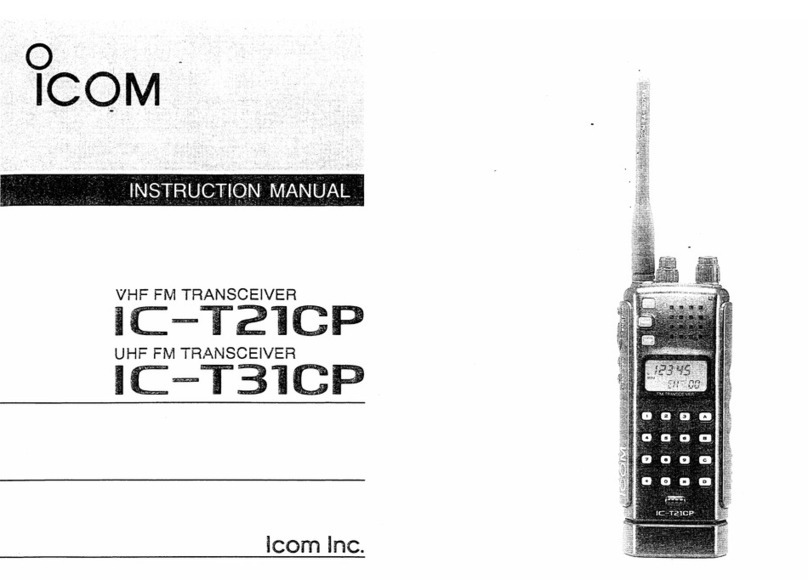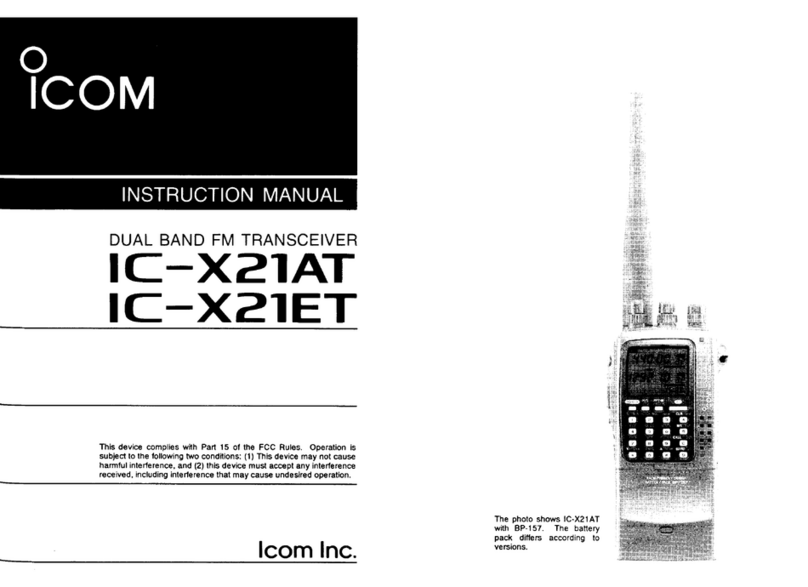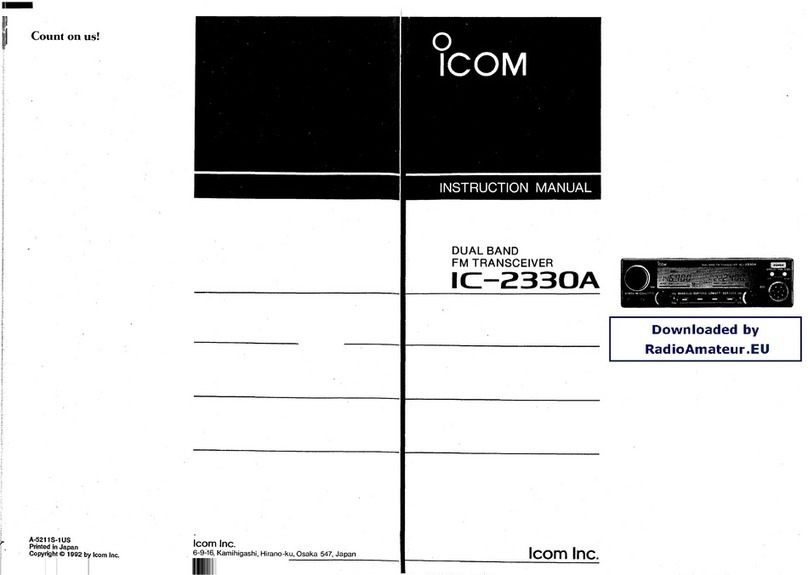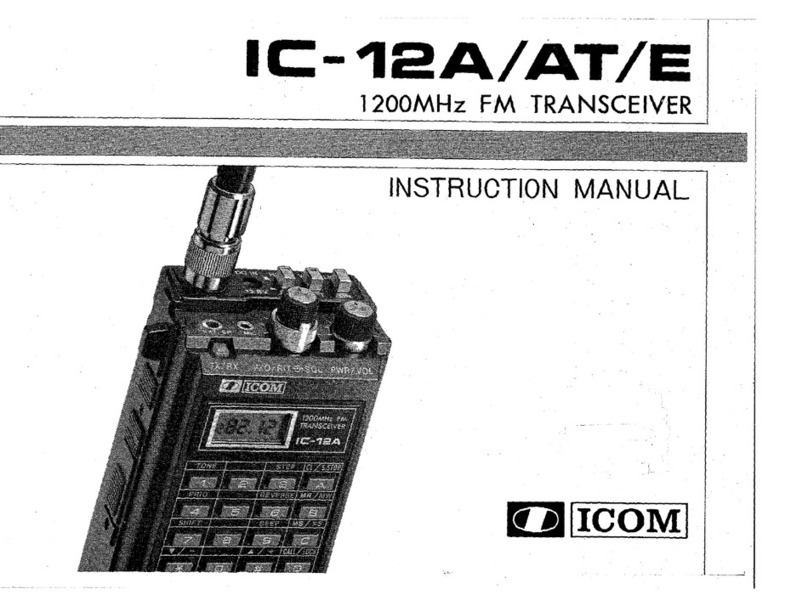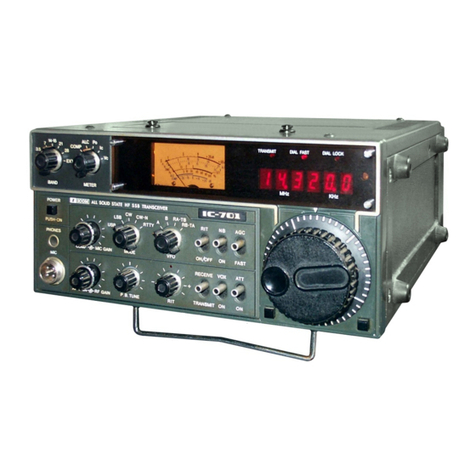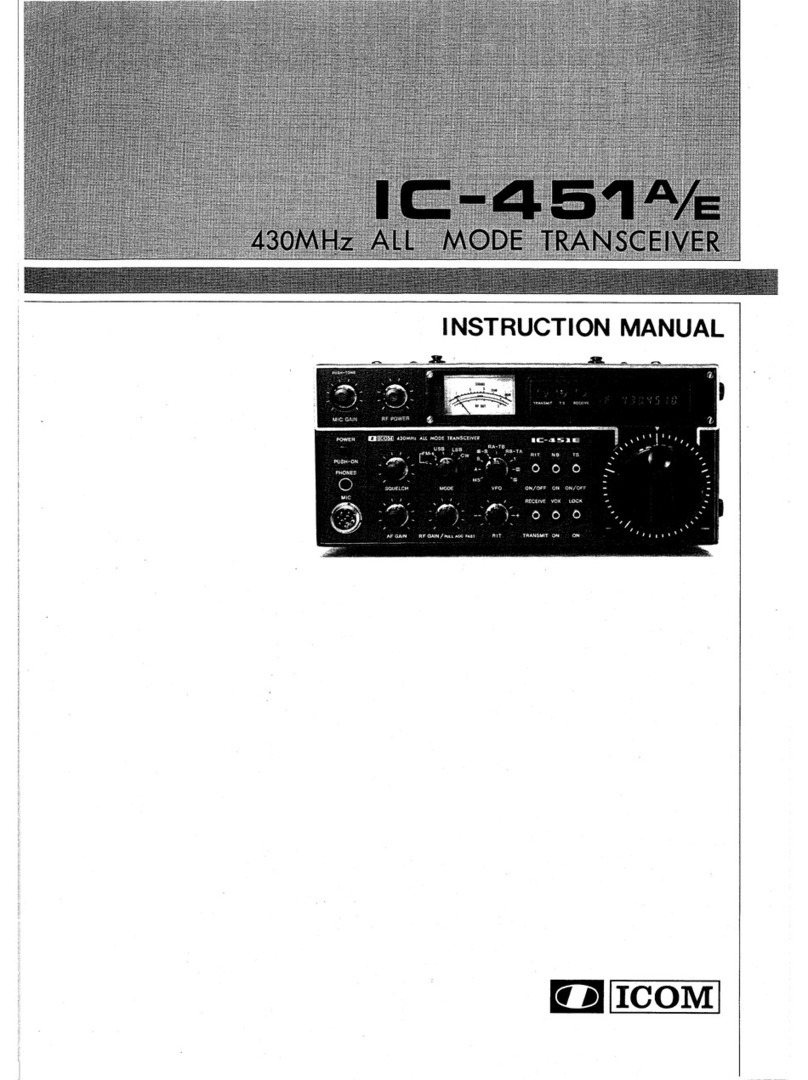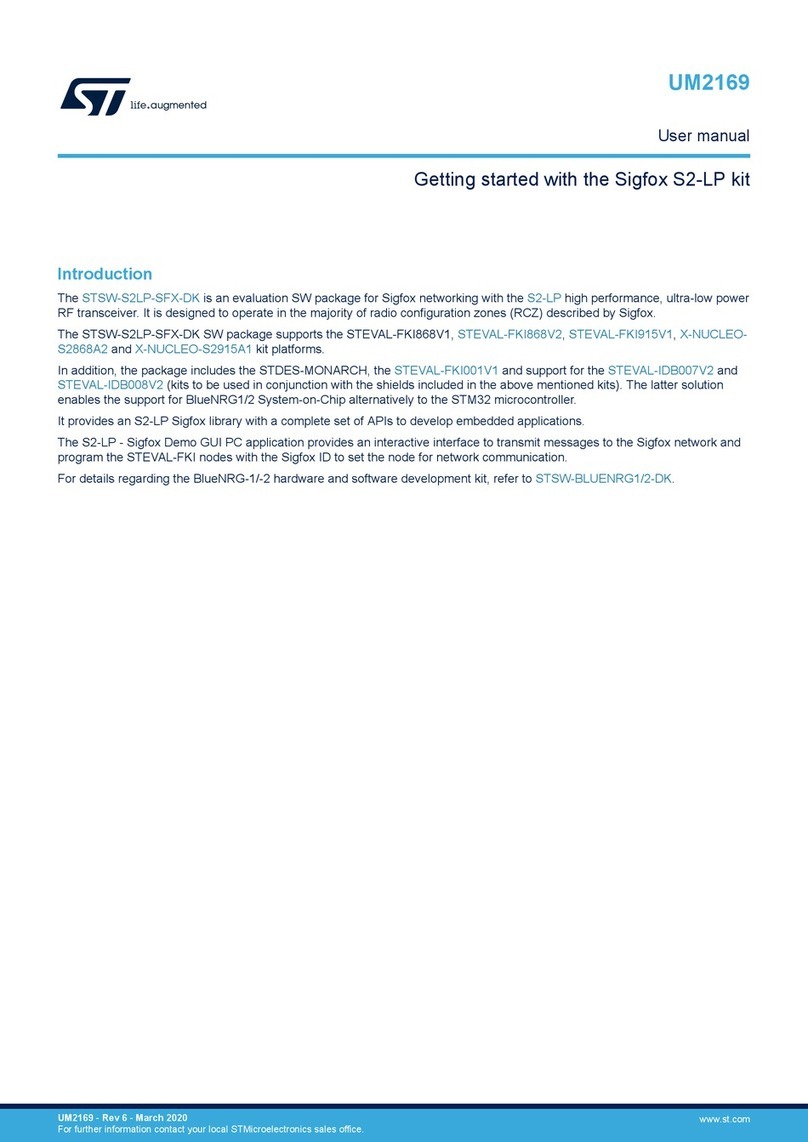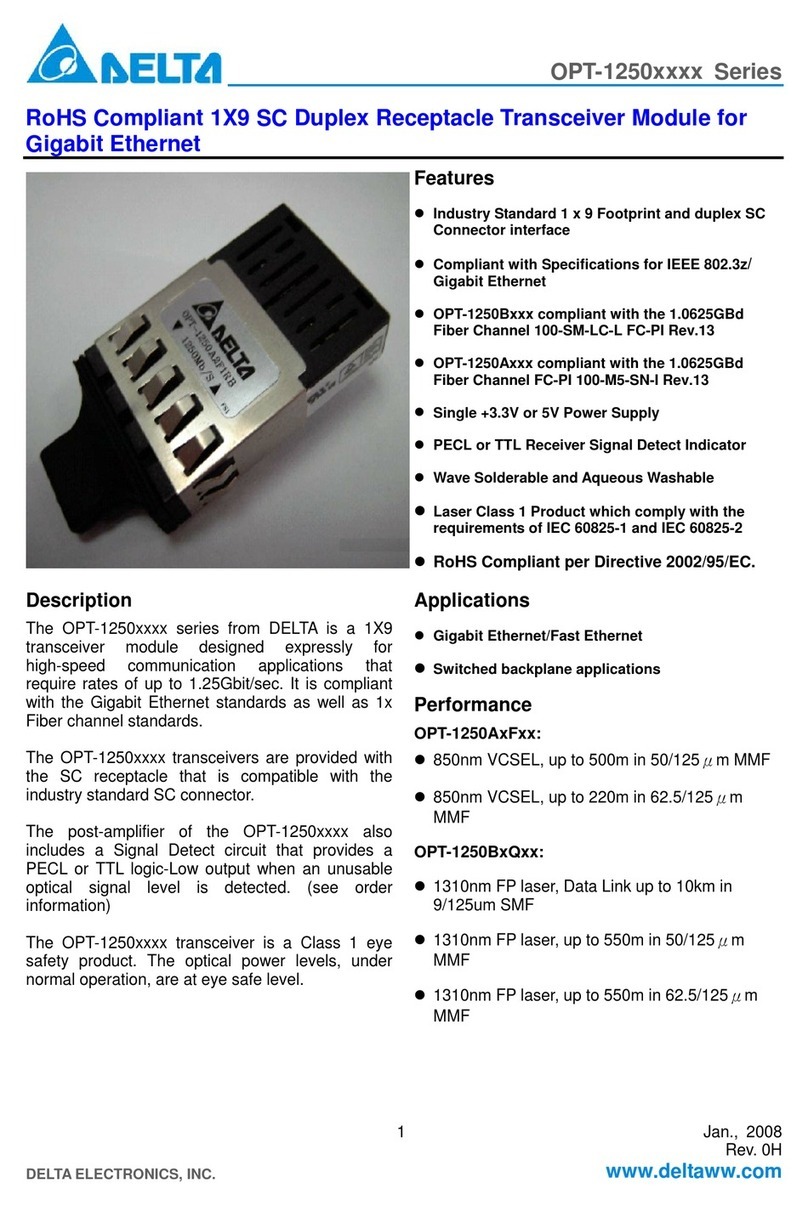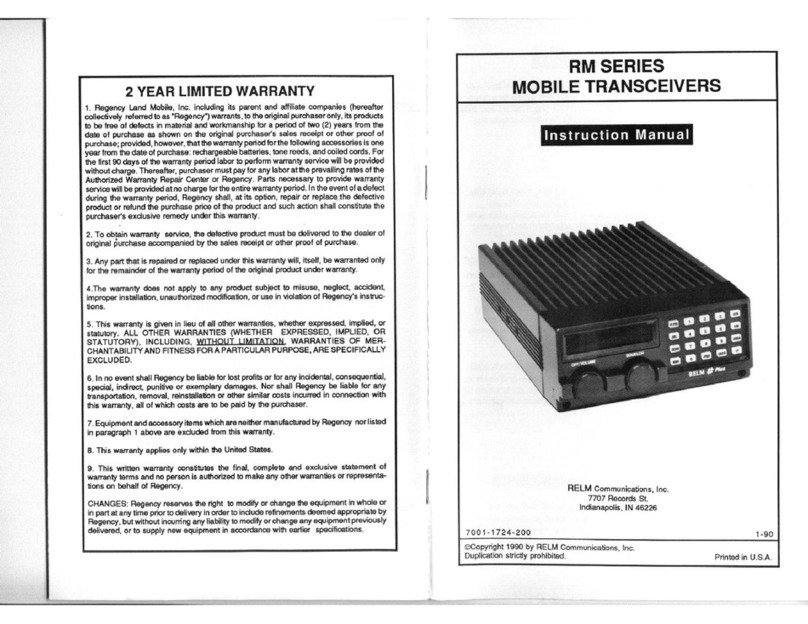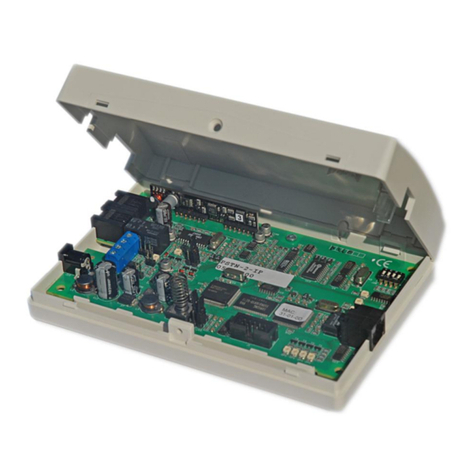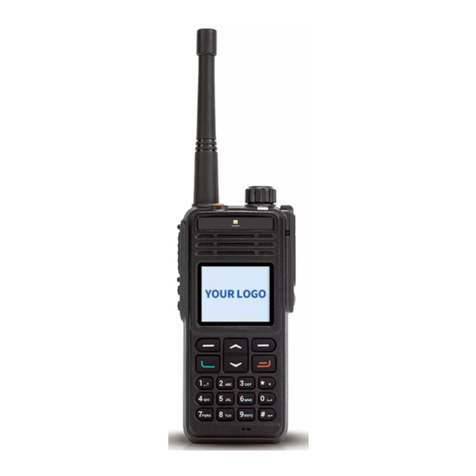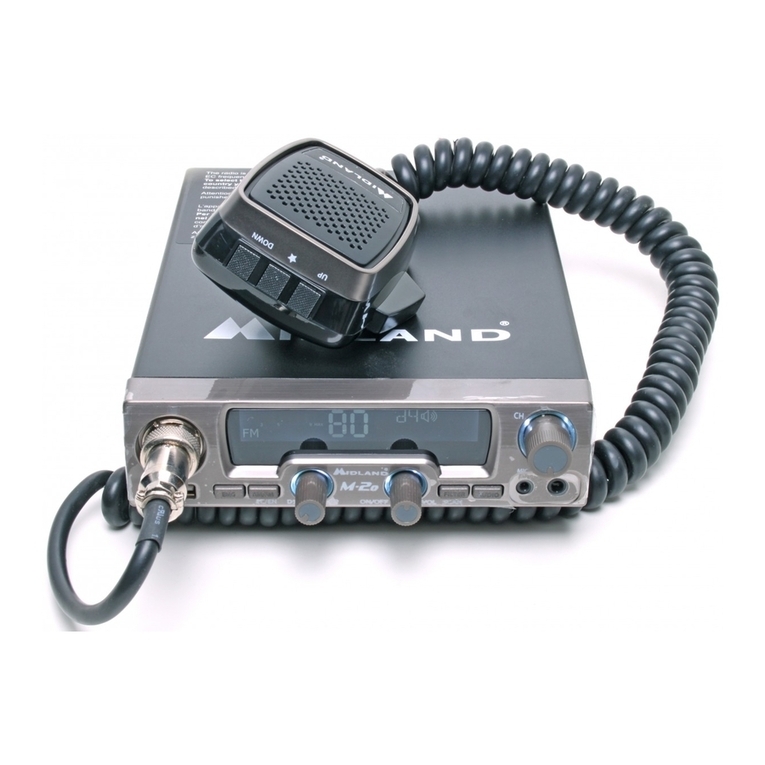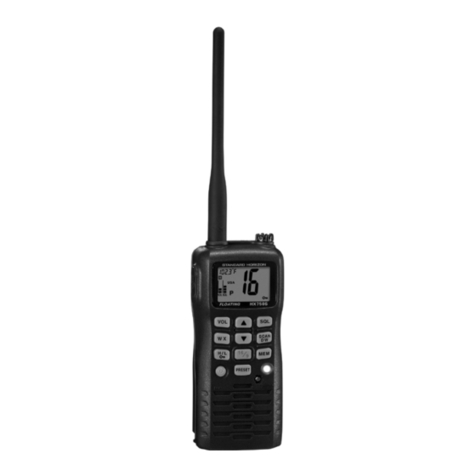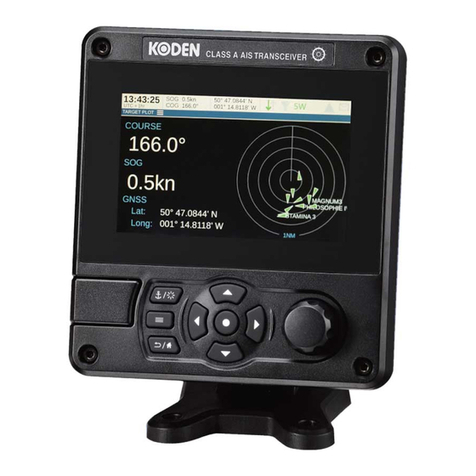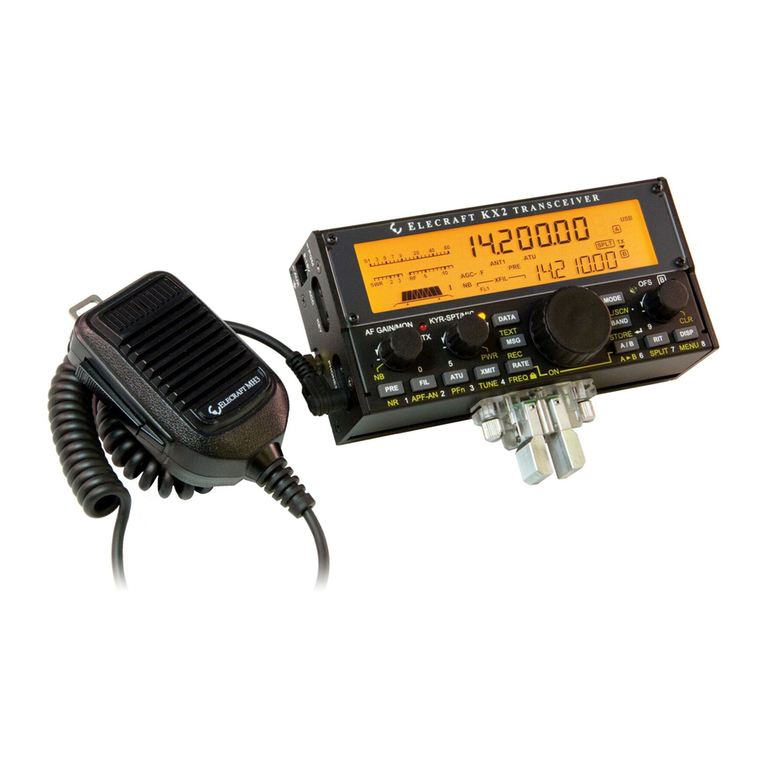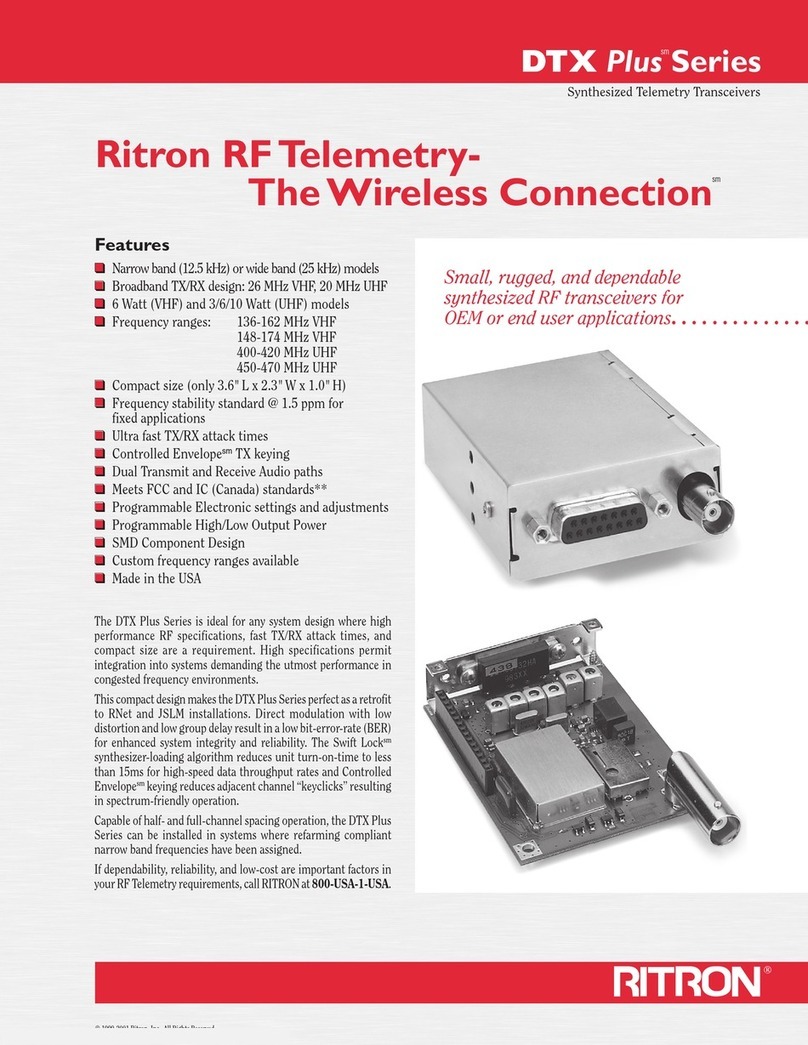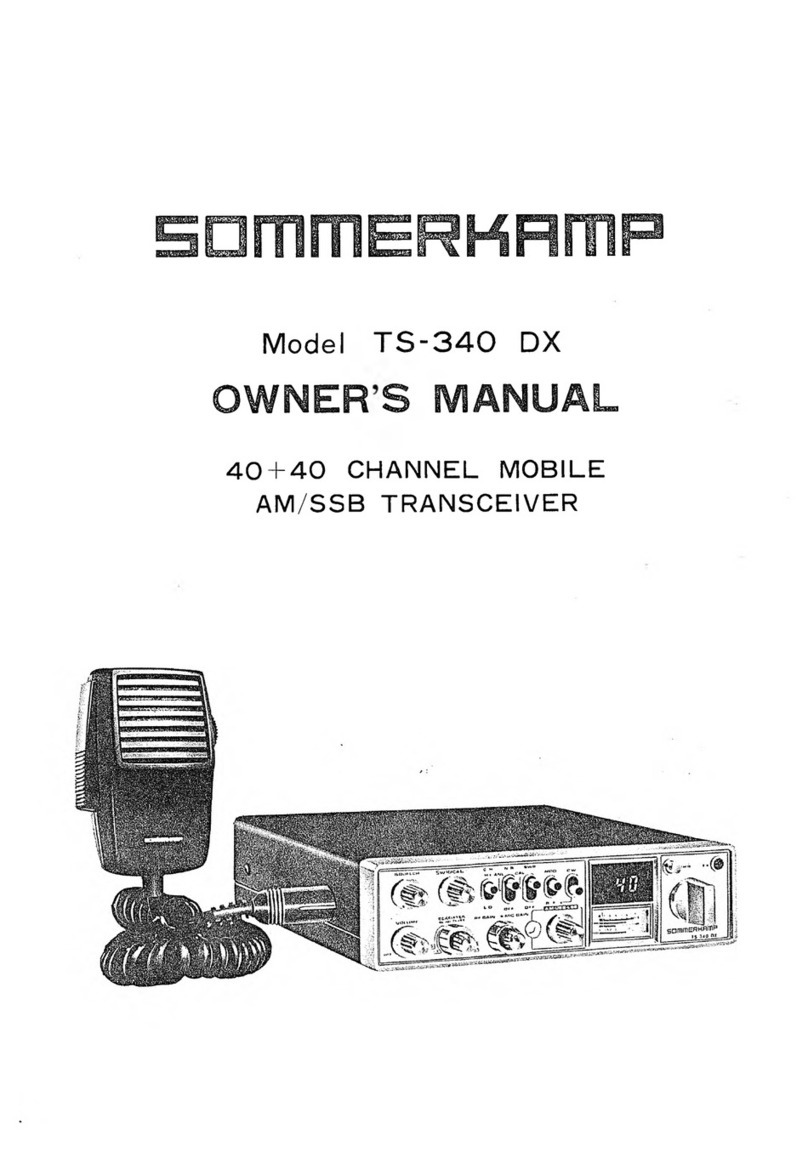Icom IC-A110 User manual

iA110
VHF AIR BAND TRANSCEIVER
INSTRUCTION MANUAL
This device complies with Part 15 of the
FCC Rules. Operation is subject to the
condition that this device does not cause
harmful interference.

CAUTIONS
i
RWARNING! NEVER operate the transceiver with a
headset or other audio accessories at high volume levels.
Hearing experts advise against continuous high volume op-
eration. If you experience a ringing in your ears, reduce the
volume level or discontinue use.
NEVER connect the transceiver to an AC outlet or to a
power source of more than 27 V DC. Such a connection will
damage the transceiver.
NEVER connect the transceiver to a power source that is
DC fused at more than 5 A. Accidental reverse connection will
be protected by this fuse, higher fuse values will not give any
protection against such accidents and the transceiver will be
ruined.
DO NOT operate the transceiver near unshielded electrical
blasting caps or in an explosive atmosphere.
DO NOT connect the transceiver to a power source using
reverse polarity. This connection will not only blow fuses but
also may damage the transceiver.
DO NOT place unit in a non-secure place to avoid inad-
vertent use by children.
FOREWORD
READ ALL INSTRUCTIONS carefully and completely
before using the transceiver.
SAVE THIS INSTRUCTION MANUAL —This in-
struction manual contains important operating instructions for
the IC-A110.
EXPLICIT DEFINITIONS
The explicit definitions below apply to this instruction manual.
WORD DEFINITION
RWARNING
CAUTION
NOTE
Personal injury, fire hazard or electric shock
may occur.
Equipment damage may occur.
If disregarded, inconvenience only. No risk
of personal injury, fire or electric shock.
Icom, Icom Inc. and the logo are registered trademarks of Icom Incor-
porated (Japan) in the United states, the United Kingdom, Germany, France,
Spain, Russia and/or other countries.

DO NOT push the PTT when not actually desiring to trans-
mit.
AVOID using or placing the transceiver in direct sunlight or
in areas with temperatures below –30°C (–22°F) or above
+60°C (+140°F).
AVOID placing the transceiver in excessively dusty envi-
ronments.
AVOID placing the transceiver against walls. This will ob-
struct heat dissipation.
AVOID the use of chemical agents such as benzine or al-
cohol when cleaning, as they damage the transceiver sur-
faces.
BE CAREFUL! The transceiver will become hot when
operating continuously for long periods.
ii
FCC caution: Changes or modifications to this transceiver, not
expressly approved by Icom Inc., could void your authority to
operate this transceiver under FCC regulations.
TABLE OF CONTENTS
FOREWORD ........................................................................................... i
EXPLICIT DEFINITIONS ......................................................................... i
CAUTIONS .............................................................................................. i
TABLE OF CONTENTS .......................................................................... ii
1 PANEL DESCRIPTION ................................................................ 1–3
■Panel description .............................................................................. 1–2
■Function display .................................................................................... 3
2 BASIC OPERATION ................................................................... 4 –5
■Power ON ............................................................................................. 4
■Channel selection .................................................................................. 4
■Squelch function .................................................................................... 5
■Side tone function.................................................................................. 5
■LCD backlight control ............................................................................ 5
■Dial select function ................................................................................ 5
3 SCAN OPERATION ..................................................................... 6–7
■Scan operation ..................................................................................... 6
■On-hook scan ....................................................................................... 7
■Dualwatch ............................................................................................. 7
4 MEMORY PROGRAMMING ........................................................ 8–9
■Programming a memory channel .......................................................... 8
■Memory names...................................................................................... 9
5 OTHER FUNCTIONS ............................................................... 10–11
■Initial set mode ................................................................................... 10
6 CONNECTION AND INSTALLATION ..................................... 12–13
■Rear panel and connections ............................................................... 12
■Mounting ............................................................................................. 13
■Supplied accessories........................................................................... 13
7 CLONING ...................................................................................... 14
8 SPECIFICATIONS ............................................................ 15–16
9 OPC-871 HEADSET ADAPTER........................................ 17–18
■OPC-871 Headset adapter .................................................................. 17
10 OPTIONS ................................................................................ 19
11 SAFETY TRAINING INFORMATION ...................................... 20

■Panel description
qTUNING [DIAL(TS)]
➥Changes the operating frequency; memory channel in
memory mode; set mode contents in set mode, etc.
➥Push to toggle the dimmer control OFF, Low and High.
➥Push and hold for 1 sec. to select the Tuning Step [TS];
1 MHz or 10 kHz are available. (p. 5)
wFUNCTION DISPLAY (p. 3)
Displays the operating frequency, memory channel name, etc.
eVOLUME UP [Y] DOWN [Z]KEY
Adjusts the audio output level.
rLOUD SPEAKER
Front mounted loud speaker.
tPOWER SWITCH [POWER]
Push and hold 500 m sec. to turn the power ON and OFF.
➥The following functions are available at power ON as options:
• Initial set mode (p. 10)
• Cloning mode (p. 14)
1
1PANEL DESCRIPTION
V/M
SCAN
PRI SQL
!0
qwe
r
tyu
io

2
1
PANEL DESCRIPTION
ySQL SWITCH [SQL]
➥Push to turn on the squelch adjust mode. (p. 6)
➥Push and hold this switch for 1 sec. to turn ON/OFF the
both internal and external speaker output. (p. 4)
uPRIORITY SWITCH [PRI]
Push to select priority channel. (p. 11)
• “Pr” appears on the display.
iSCAN SWITCH [SCAN]
➥Starts and stops the scan function:
• VFO mode: VFO scan function.
• Memory mode: Memory channel scan function. (p. 6)
➥Push and hold this switch for 5 sec. to set the displayed
channel as a memory lock-out channel. (p. 8)
• “LOCK OUT” appears on the display.
oVFO/MEMORY SWITCH [V/M]/[MW]
➥Push to toggle the VFO mode or the Memory mode. (p. 4)
• “X” and memory channel number appear when memory mode
is selected.
• The transceiver has 99 memory channels.
➥When VFO mode is selected;
•Push and hold this switch for 5 sec. to program the VFO fre-
quency to memory channel. (p. 8)
➥When Memory mode is selected;
•Push and hold this switch for 5 sec. to turn the “Memory name
write mode” ON.
!0 MICROPHONE CONNECTOR
Connects the supplied microphone or optional.
NEVER connect other microphones. The pin assignments
may be different and the transceiver may be damaged.
MICROPHONE
The supplied microphone has a PTT switch and a cradle. The
following functions are available when the microphone is
taken off from the hook or put back on hook:
➥Automatic scan starts when putting on hook. (p. 7)
➥Automatic scan stops when taken off hook. (p. 7)
NOTE: Optional functions vary with transceiver version.
In this manual, optional functions are indicated by
“ ” Icon.
Please contact your dealer for details.

3
1PANEL DESCRIPTION
■Function display
qMEMORY MODE INDICATOR (p. 5)
Appears when memory mode is selected.
wDUALWATCH INDICATOR (p. 7)
Indicates when the dualwatch function is activated.
eSCAN INDICATOR (p. 8)
Indicates when the scan function is selected.
rBUSY INDICATOR (p. 6)
“BUSY” appears when receiving a signal or when the squelch
is open. (p. 6)
tTX INDICATOR (p. 5)
Appears while transmitting.
yFREQUENCY DISPLAY (p. 11)
➥Shows the operating frequency.
➥Shows the channel name when the memory name function
is selected. (p. 10)
uVOLUME LEVEL INDICATORS
➥Shows the AF volume level(while receiving).
iSET MODE INDICATOR
➥Appears when the Initial set mode is selected. (p. 12)
oLOCK OUT INDICATOR
➥Appears when the channel is set as a ‘LOCK OUT’ chan-
nel. (p. 8)
!0 MEMORY CHANNEL INDICATOR
➥Indicates the selected memory channel number
➥‘Pr’ appears when the priority channel is selected.
*NOTE: The VFO/memory switch [V/M] and the memory
write switch [M/W] functions may not be available de-
pending on version.
wq rt
!1
e
oiu
y

4
2
BASIC OPERATION
■Power ON
qPush [POWER] to turn power ON.
wOperate the transceiver as indicated in the following sec-
tions.
eSelect the desired memory channel (or VFO frequency)
with the [V/M] keys.
•When receiving a signal, appears and audio is emit-
ted from the speaker.
•Further adjustment of audio level may be necessary at this point.
• Push [SQL] to adjust the squelch level. (p. 6)
• Push and hold the tuning dial for 1 sec. to select the [TS], each
push increments/decrements to the frequency are either 10 kHz
or 1 MHz. (p. 7)
rPush and hold [PTT] to transmit, then speak into the mi-
crophone.
• Transmit indicator lights.
tRelease [PTT] to receive.
■Channel selection
ïVFO/Memory selection
qPush [V/M] to select memory
mode or VFO mode.
➥Rotate the dial to select a de-
sired frequency/channel.
wDuring memory mode opera-
tion, push the [V/M] key to
transfer the memory contents
to VFO.
• Push [V/M] to select VFO
mode.
NOTE: Only frequency data is transferred even if the
memory channel has a memory name.
ïExternal speaker output control
External speaker output can be turned OFF, if desired.
qPush and hold [SQL] for 1 sec.
wRotate the dial to select “SP OFF”.
ePush [SQL] to turn to the previous mode.
NOTE: This function avail-
able for both internal and ex-
ternal speakers.

1-1-32 Kamiminami, Hirano-ku, Osaka 547-0003, Japan
A-5616H-1EX-e
Printed in Japan
©1999–2008 Icom Inc.
Printed on recycled paper with soy ink.
Other manuals for IC-A110
4
Table of contents
Other Icom Transceiver manuals
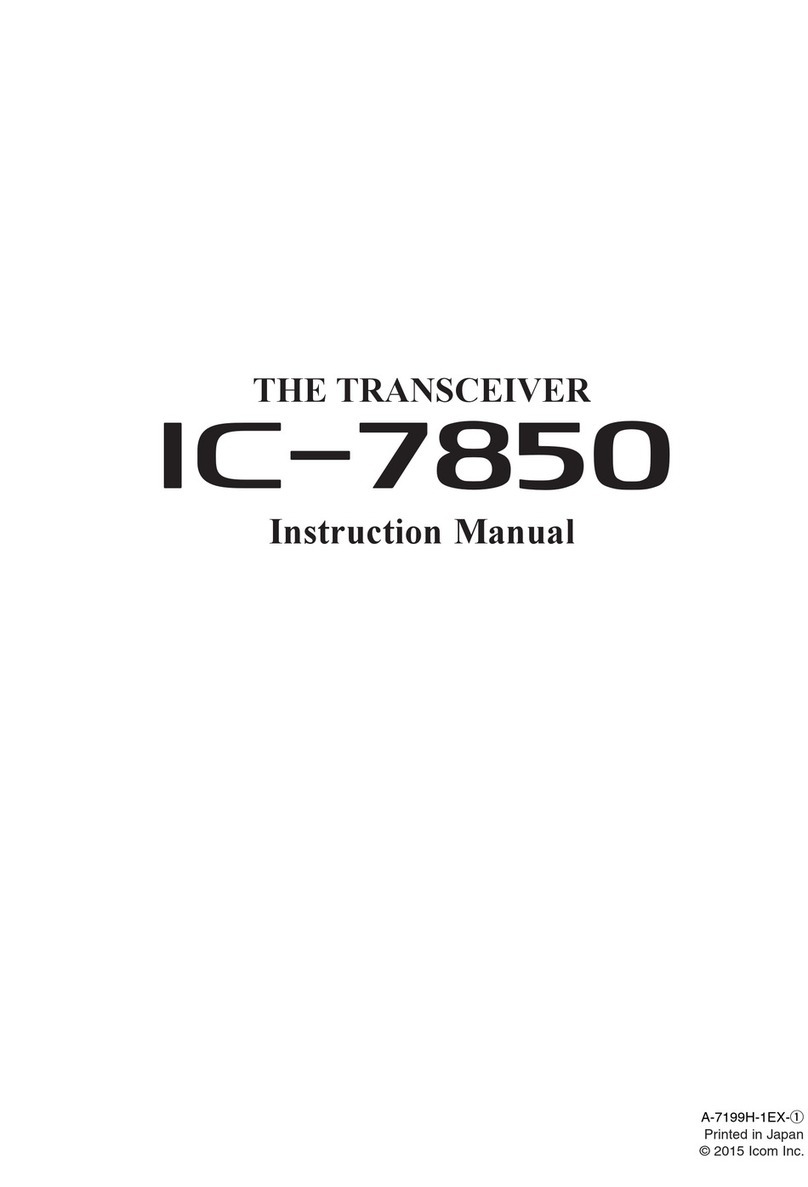
Icom
Icom iC-7850 User manual
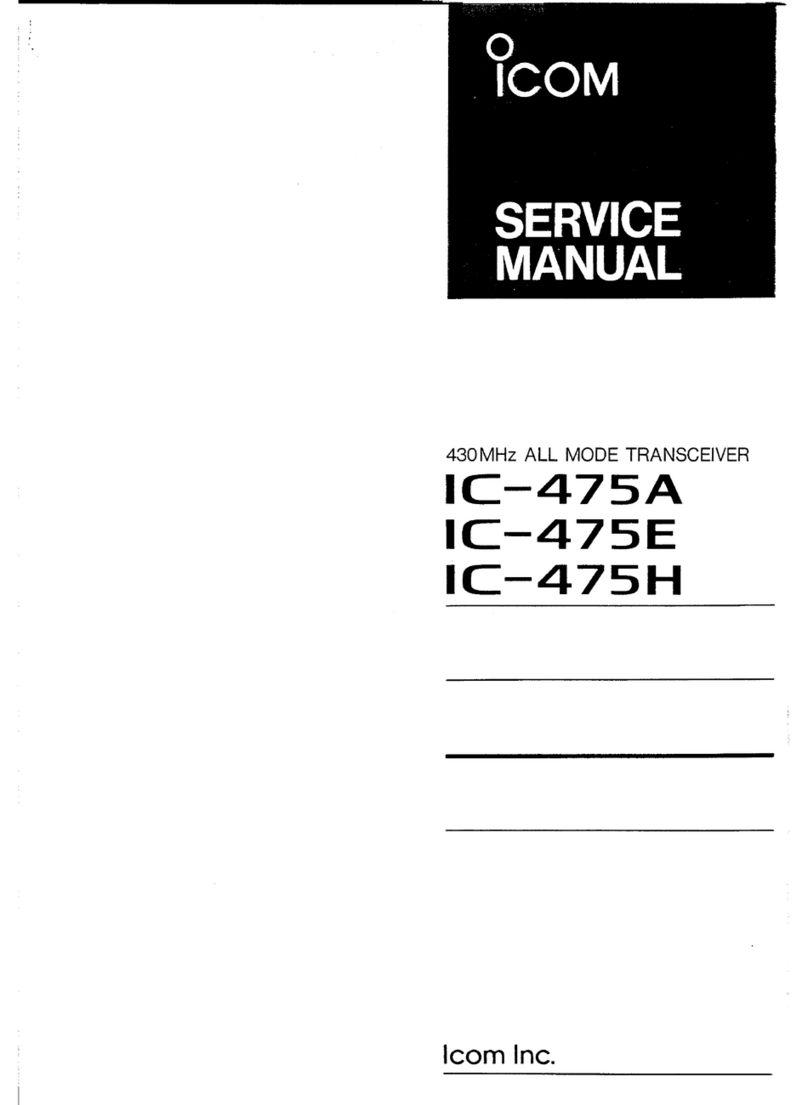
Icom
Icom IC-475H User manual
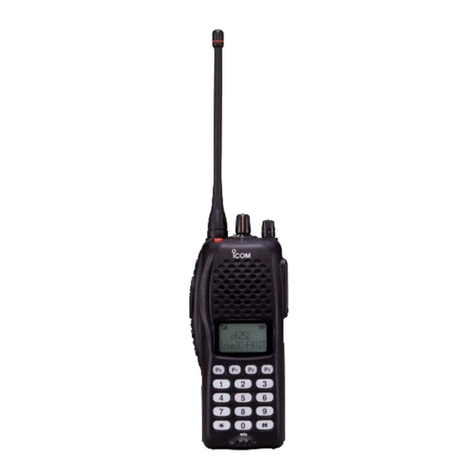
Icom
Icom IC-F31GT User manual
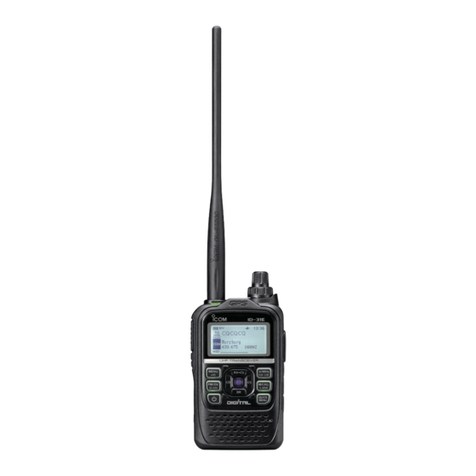
Icom
Icom D-STAR ID-31A; D-STAR ID-31E User manual
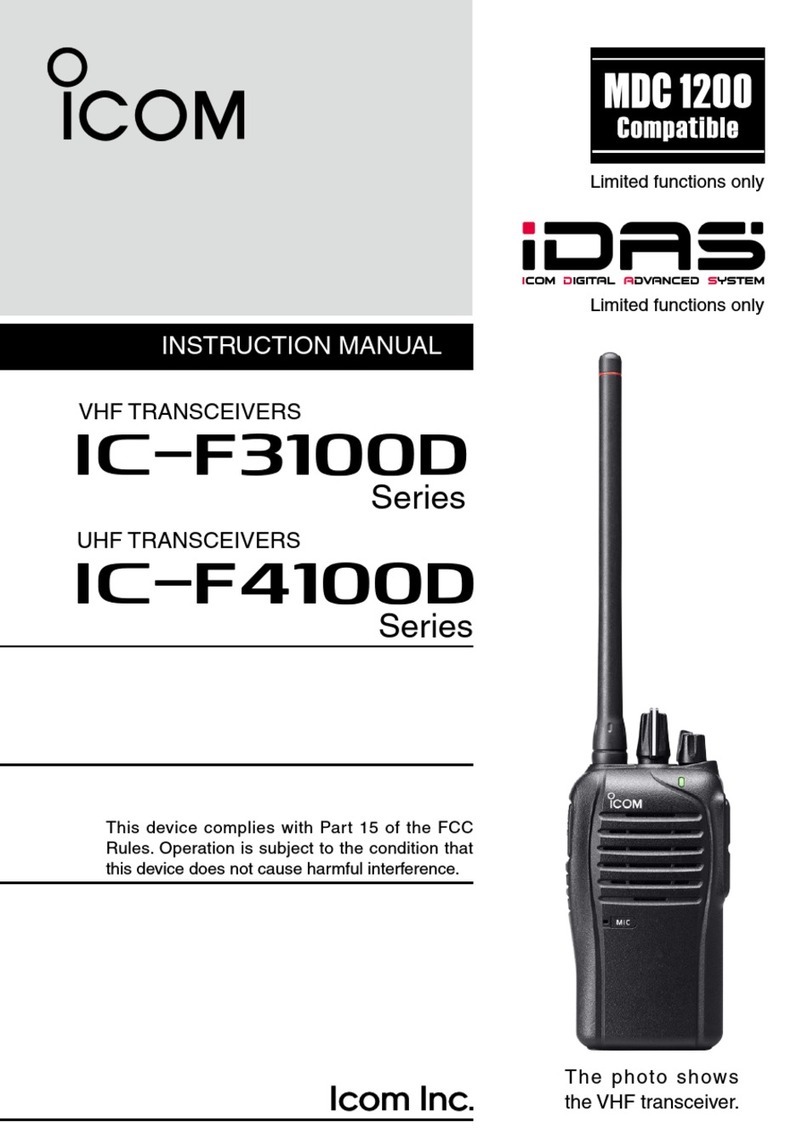
Icom
Icom IC-F3100D series User manual

Icom
Icom IC-V200T User manual

Icom
Icom IDAS IC-F3210D User manual

Icom
Icom IF1721/D User manual

Icom
Icom IC-F40LT User manual
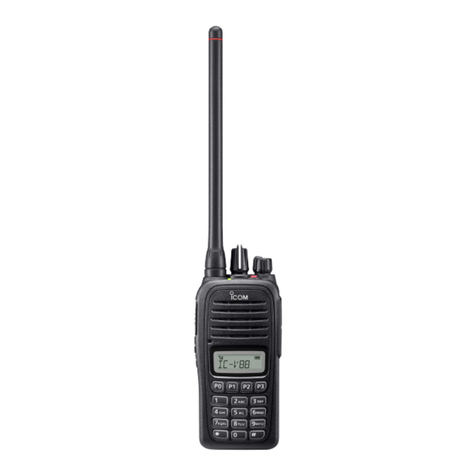
Icom
Icom Ic-V88 User manual
